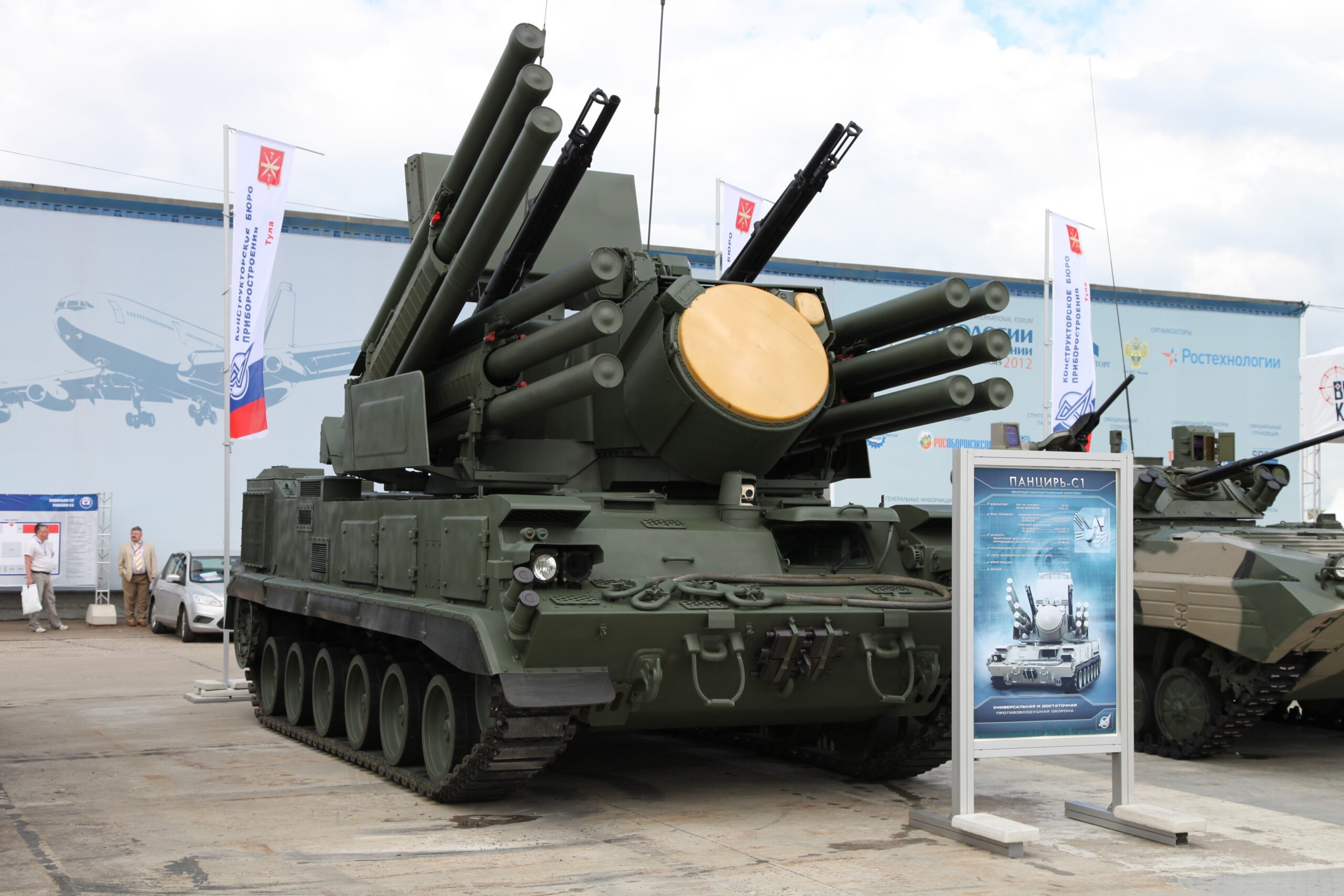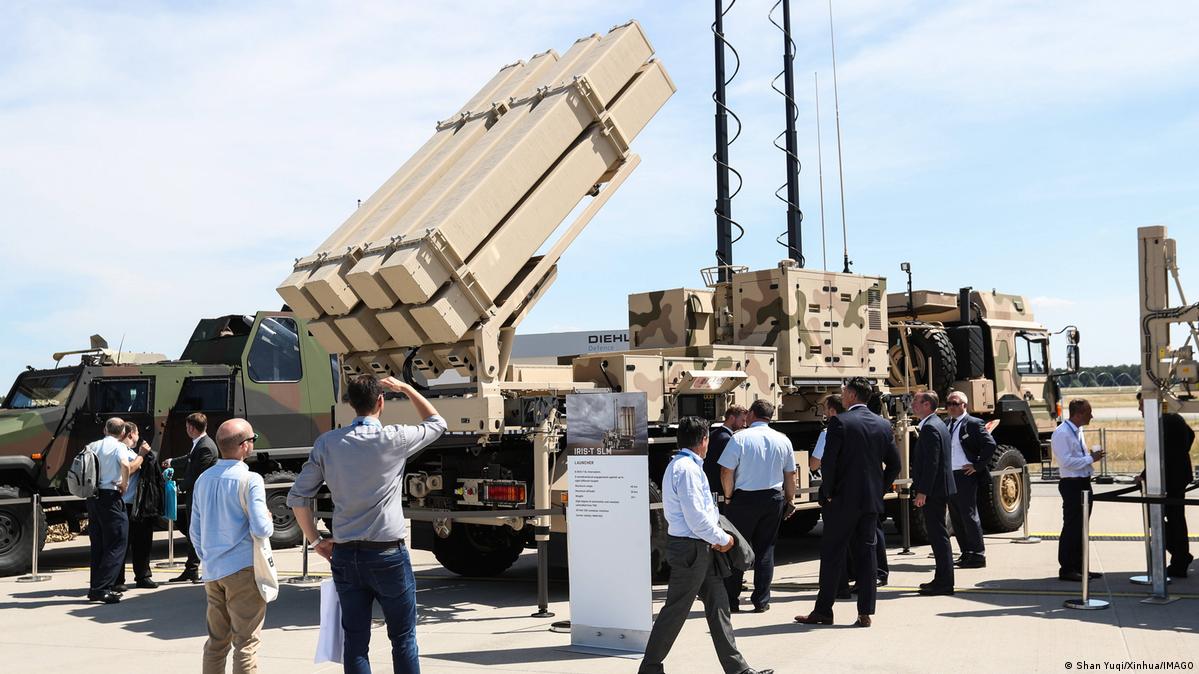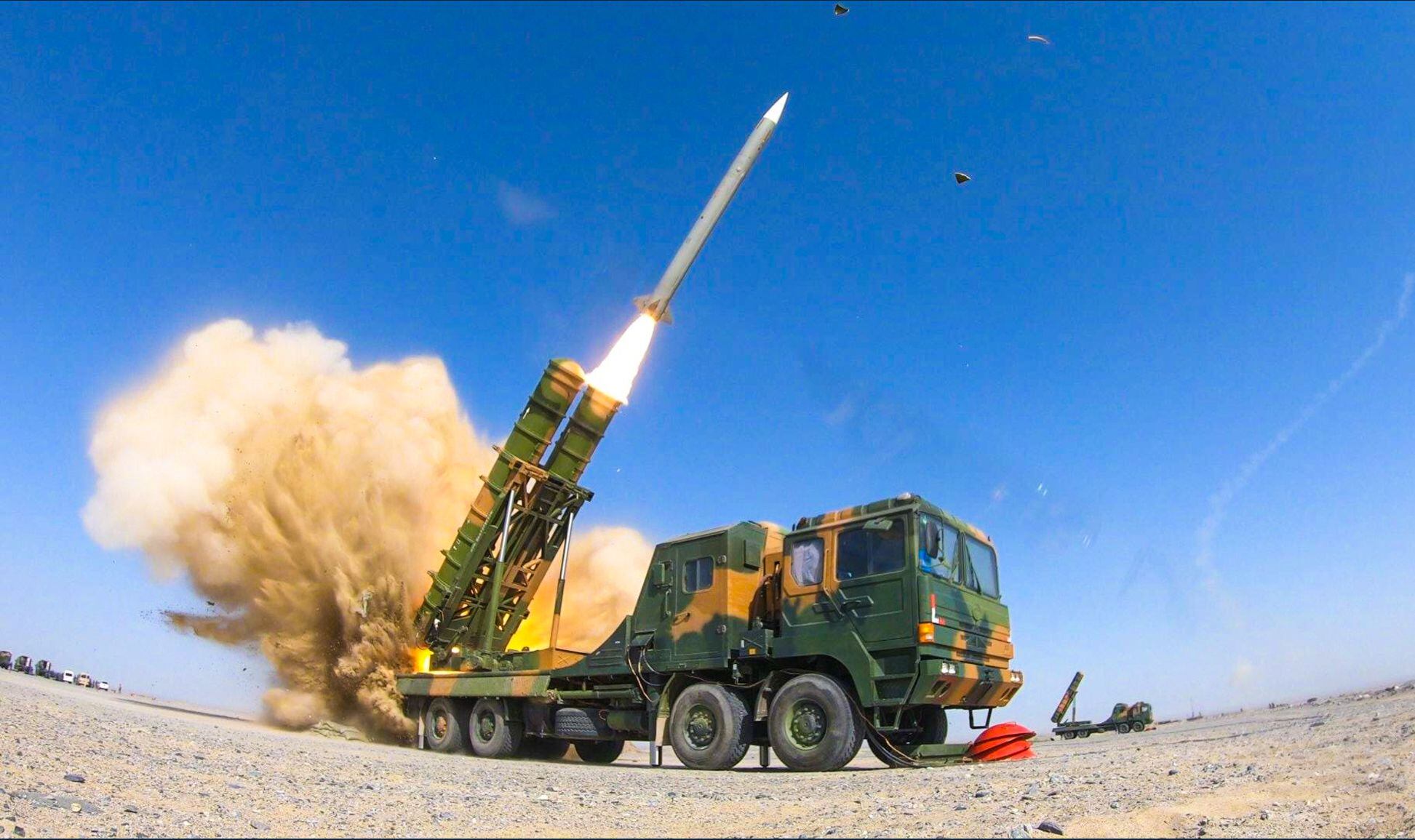Anti Aircraft Missile Launcher - Further Missile Threat mentions that Iran unveiled the Hoveyzeh cruise missile in February 2019, which has a stated range of 1,350 kilometers, significantly less than the Soumar. Missile Threat also notes that Hoveyzeh's engine housing is typical of a turbojet rather than a turbofan engine.
Iran's cruise missiles increase the vulnerability of military facilities in the Persian Gulf region, as they are ideal for hitting point targets such as aircraft in hardened shelters. Pasandideh also notes that defense against cruise missiles is challenging, as their low-altitude, high-subsonic flight substantially reduces the reaction time of air defenses.
Anti Aircraft Missile Launcher
The USAF is moving ahead with the development of the Miniature Self Defense Missile (MSDM) which will act as an air-launched defensive interceptor capable of destroying incoming missiles. MSDM will be carried aboard air superiority and strike aircraft that are expected to fly into heavily defended zones.
Raytheon has been awarded a $375 million contract to deliver a flight test ready missile by 2023. Formally, it's an Indefinite Delivery Indefinite Quantity (IDIQ) contract – although there's a pretty definite plan to deliver 144 vehicles over five years for $1.2 billion.
That's just under $8.5 million apiece, but the contract includes testing, spares, and other support as well as the vehicle itself. But it's General Dynamics that builds the 8×8 Stryker, which has risen from controversial origins to be a multi-purpose workhorse for the Army.
It's derived from a versatile 1970s-vintage Swiss design, the MOWAG Piranha, whose many offshoots also include the Marines' LAV-25 and the Canadian LAV-III. The Army, however, had long disdained relatively lightweight wheeled fighting vehicles, seeing tracks as better suited to carry heavily armored machines over rough terrain.
The Army passed over the Stryker in favor of a tracked vehicle (by BAE) for its Armored Multi-Purpose Vehicle, which has to keep up with tanks cross-country. But the Stryker's roomy, maintainable chassis makes it easy to adapt quickly to new roles.
The vehicle is thriving as a platform for a wide range of missions, from the basic troop carrier to the anti-aircraft IM-SHORAD, an upgunned variant to kill light armored vehicles like the Russian BMP, a high-powered jammer, and a future

laser-armed Stryker to shoot down drones. Although the CONPLAN details are classified, the report notes that the US and Israel conducted their largest bilateral military exercise in January, dubbed Juniper Oak, which involved B-52s dropping bunker-buster bombs on simulated Iranian nuclear sites.
Besides ballistic and cruise missiles, Iran may be on its way to fielding hypersonic weapons. Asia Times reported in November 2022 that Iran may have already developed hypersonic missiles with Russian assistance as a quid pro quo for Iran's provision of drones to Russia in the ongoing Ukraine war.
Iran's cruise missile program may address the operational capability gap in its ballistic missile arsenal. As Asia Times reported last month, accuracy remains the primary limitation of Iran's ballistic missile arsenal. Its missiles have limited capability against point targets, limiting their use against large targets such as cities and population centers.
The IISS report says that the Su-24M's 500-kilometer combat radius with the Asef's possible 1,000-1,500-kilometer range gives the new missile a 2,000-kilometer maximum strike range, which if so would allow Iran to target all of Israel and most of
Saudi Arabia. The writers list these imports as guidance systems, ultra-high-strength steels and high-grade aluminum, ball bearings for liquid-fuel rocket engines, raw ingredients for composite materials such as carbon fiber, graphite parts for heat-resistant missile components, missile
ground testing equipment and parts, and tungsten powder and alloy plates for thrust vectoring systems. In August 2020, Iran unveiled a naval version of the Hoveyzeh known as the Abu Mahdi, which Iran claims has a range of 1,000 kilometers.
However, it is unclear how the Abu Mahdi would manage midcourse guidance updates or why it has a shorter range than the Hoveyzeh, leading some analysts to suspect that it is the Hoveyzeh repurposed for anti-ship roles.

While the USAF is moving ahead with flight testing MSDM the Navy remains in the conceptual study phase with its own Hard Kill Self Protection Countermeasure System (HKSPCS). The focus of this program is different and whether the two can become a joint effort is unclear.
While the MSDM intends to defend fast jet aircraft that are penetrating into defended airspace the HKSPCS is to defend large and slow aircraft that operate in the rear area. With the proliferation of long-range missiles, these aircraft may become vulnerable even far away from the front lines.
Europe is also looking to develop a similar system to MSDM known as HKAMS (Hard Kill Anti Missile System). The system is also known as HK-DAS (Hard Kill Defensive Aid Suite) and was displayed at the DSEI expo last year with the Tempest model.
The first combat unit to receive IM-SHORAD is already training on prototype vehicles at White Sands, the Army's director of modernization for air & missile defense told me recently. Live-fire training will start in early November, Brig.
Gen. Brian Gibson said. Few details are available but it seems Lockheed focused on using a radar seeker, which is typically expensive, while Raytheon opted for an IR seeker. Interestingly, a patent was published by Raytheon in 2016 showing a missile head that combined an IR sensor with a distributed radar array.
With the radar integrated into the control surfaces rather than the nose, much more space is freed up for an IR seeker. This would be especially useful for very small missiles, as is the case with MSDM.
Whether this multi-mode seeker will be used is unknown and unlikely given the cost. However, having a passive RF seeker could be useful for detecting threat missiles by listening to their radar emissions. Moreover, Iran may be developing air-launched cruise missiles to improve the survivability of its missile arsenal.

This month, The Intercept reported that the US has allocated secret spending for an Iran contingency plan (CONPLAN), codenamed “Support Sentry.” Currently, aircraft self-defense is limited to jamming pods and active decoys of both towed and free fall types.
These are all soft kill measures that distract threat sensors to lure them from the host aircraft. While highly effective, they may not remain so as weapon systems become more advanced. For example, next-generation missiles may combine both imaging IR and radar seekers to see through countermeasures.
Israel's Stunner missile already does this and has been carried onboard an F-16 in tests. Missile Threat notes that the Kh-55 is roughly analogous to the US Tomahawk cruise missile, with a roughly identical body diameter and length and capable of carrying a 410-kilogram nuclear warhead or a 400-kilogram conventional explosive warhead in the Kh-555 variant.
Both are guided by inertial guidance or terrain contour matching (TERCOM). The Soumar, first unveiled in March 2015, is likely a ground-launched copy of the Kh-55, with a claimed range of 2,500 kilometers, as noted by Missile Threat in July 2021. However, the report notes that Iran's inability to produce a
domestic version of the Kh-55's turbofan engine means that its range may be substantially less than Iran claims. Then-Army Chief of Staff Gen. Eric Shinseki embarked on a much-criticized crusade to bring wheeled armored vehicles to the Army, leading to the first Srtryker orders in 2001. It entered service slightly too late for the invasion of Iraq, but in the long guerrilla war that followed, Stryker units
proved valuable fire brigades, able to rapidly redeploy by road to trouble spots and drive both on and off road, unlike many lumbering MRAP trucks. Their armor, while lighter than a tank's, was a definite improvement over Humvees, and being wheeled made them easier to maintain on long drives than tracked vehicles.
Last month, the Institute of International and Strategic Studies (IISS) reported that Iran had partially displayed the Asef on a Su-24M ground-attack aircraft and that it appeared similar to the Soviet-era Kh-55, which Russia has used in Syria

and the ongoing Ukrainian war. The MSDM program began conceptual development in 2015 resulting in a competition between Lockheed Martin and Raytheon. Northrop was also involved in seeker concept development. An emphasis was put on keeping the missile cost low so the ammunition can be expended in large numbers.
Of key importance was creating a seeker effective enough to track incoming missiles but cheap enough for high volume production. This variant of the 8×8 armored Stryker boasts an anti-aircraft radar, a 30mm autocannon, and a missile launcher capable of launching Stingers and Hellfires.
(A laser-armed Stryker variant is also in development). IM-SHORAD will replace the aging, unarmored, and undergunned Avenger, a Stinger-shooting variant of the Humvee, which has filled the Short-Range Air Defense role since the Cold War. Its Hellfires also give it significant ability to kill tanks.
Close up of the Moog Reconfigurable Integrated-Weapons Platform (RiwP) turret for the anti-aircraft Stryker:: 4 Stinger missiles on one side, two Hellfires on the other, with a 30 mm autocannon and coaxial 12.7 mm machinegun in between (Leonardo DRS
) WASHINGTON: Life is about to get harder for low-flying MiGs, Hind gunships, and drones opposing the US Army. On Wednesday, the government officially awarded General Dynamics a highly-anticipated contract to mass-produce the Interim Maneuver SHORAD vehicle.
Russia already provides assistance to Iran's medium-range ballistic missile (MRBM) program. However, there are no verified reports that Iran has ever tested a hypersonic weapon. Although Iran has a large domestic arms industry, it is known for exaggerating its military capabilities.
Hard kill measures are advantageous because they destroy the incoming missile no matter the threat sensor. However, they are dramatically more complicated, and air launching self-defense weapons brings many challenges. Unlike missile interceptors on ships or ground platforms that weigh around 300kg, aircraft weight constraints demand that the self-defense missiles be comparatively tiny at around 10-30kg.

A specific requirement of MSDM is to avoid compromising payload capacity. Further difficulties include the fact that the host aircraft's powerful sensor cannot be relied on for precisely tracking threats as they could on a ship.
Combat aircraft radars only face forward forcing them to rely on passive tracking if the threat isn't approaching from the front. The first self-defense missile experiments began in the early 1960s involving the Pye Wacket program, intended to defend XB-70 from Soviet surface to air missiles.
That particular program had the unique challenge of the XB-70s absurd Mach 3 cruise speed which resulted in a very bizarre disc-shaped missile able to be launched in any direction without tumbling out of control. Pye Wacket fell victim to defense cuts in the 1960s, but the program was doomed anyway given the maturity of electronics at the time.
In the 60 years that followed, no serious attempts have been made to create a self-defense missile (not unclassified efforts anyway). With the growing concern of a peer war were aircraft will have to venture into the vaunted A2AD (anti-access, area denial) zones the concept has been revived.
General Dynamics is not alone in this endeavour. Leonardo DRS provides the radar and integrates the anti-aircraft weapons package – Stingers from Raytheon, Longbow Hellfires from Lockheed Martin, and the 30 mm XM914 from Northrop Grumman – onto a reconfigurable turret from Moog.
The Kh-55 is the base design for numerous Iranian cruise missile models. As noted by Missile Threat in August 2021, the Kh-55 was first designed in 1971 as a strategic cruise missile capable of delivering a nuclear warhead at a range of 2,500 kilometers with a circular error probable (CEP) of 25 meters.
Furthermore, despite Iran's push to achieve self-sufficiency and bypass sanctions imposed on its missile program, it still relies heavily on imported components. In a 2019 Foreign Policy report, Robert Einhorn and Vann H Van Diepen note that Iran still seeks essential missile parts and technologies from abroad.
russian anti aircraft missile launcher, anti aircraft missile system, submarine anti aircraft missile, us anti aircraft missiles, us anti aircraft systems, anti air missile systems, new anti aircraft weapons, russian anti aircraft missiles
0 Comments